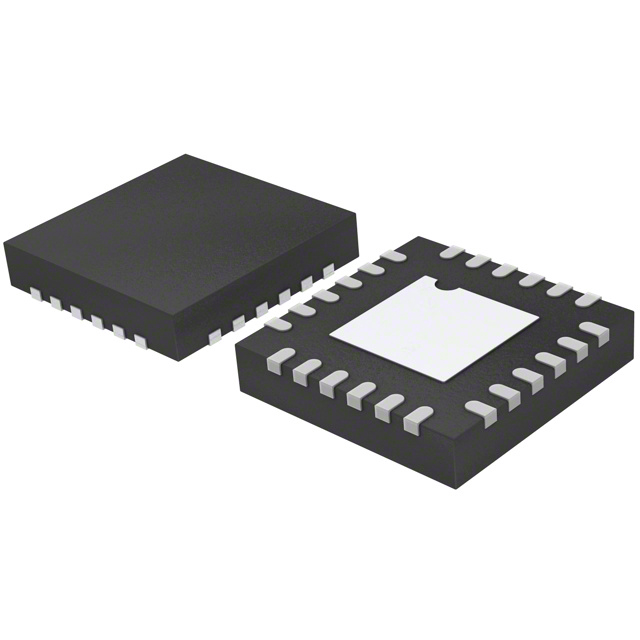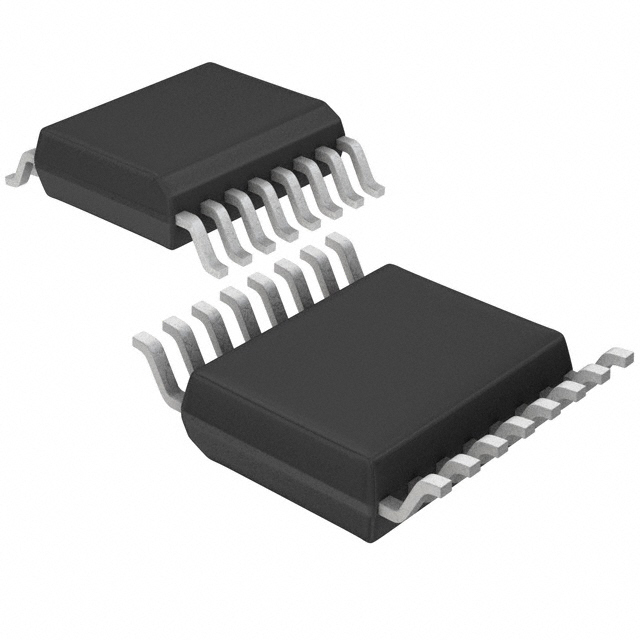Ⅰ. Linear - Amplifiers - Special Purpose
Ⅱ. Physical Characteristics of Linear - Amplifiers - Special Purpose
Ⅲ. Electrical Characteristics of Linear - Amplifiers - Special Purpose
Linear - Amplifiers - Special Purpose
Linear amplifiers are electronic devices that amplify an input signal with minimal distortion, producing an output that is a faithful reproduction of the input signal but with increased amplitude. While standard linear amplifiers serve general amplification purposes, special-purpose linear amplifiers are designed to meet specific application requirements and offer unique features. Here's an introduction to special-purpose linear amplifiers:

1.Instrumentation Amplifiers: Instrumentation amplifiers are specialized amplifiers used for precise measurement of small differential signals. They provide high input impedance, high common-mode rejection ratio (CMRR), and low input offset voltage. Instrumentation amplifiers are commonly used in applications that require accurate signal acquisition and measurement, such as sensor interfaces, bridge amplifiers, and data acquisition systems.
2.Logarithmic Amplifiers: Logarithmic amplifiers, or log amps, are designed to convert a wide dynamic range of input currents or voltages into a logarithmic output voltage. They are commonly used in applications that involve signal compression or logarithmic scaling, such as RF power measurement, audio compression, and signal processing in decibel scales.
3.Video Amplifiers: Video amplifiers are specialized amplifiers used for processing video signals. They have a wide bandwidth, high slew rate, and low distortion to accurately amplify video signals without introducing artifacts. Video amplifiers are commonly used in video processing, broadcasting, surveillance systems, and high-definition display systems.
4.Transimpedance Amplifiers: Transimpedance amplifiers (TIAs) are used to convert a current input signal into a voltage output. They are particularly suited for amplifying low-level current signals from photodiodes, phototransistors, or other current-generating devices. TIAs are widely used in applications such as optical communication systems, photodetector circuits, and light intensity measurement.
5.Current Amplifiers: Current amplifiers specialize in amplifying current signals with high accuracy and linearity. They are commonly used in applications that require precise current amplification, such as current sensing, motor control, and transducer signal conditioning.
6.Programmable Gain Amplifiers (PGAs): PGAs are amplifiers that allow the user to dynamically adjust the amplification factor or gain of the amplifier. They offer flexibility in adjusting the gain to optimize the signal level and dynamic range. PGAs are widely used in applications where the input signal level may vary, such as audio systems, communication circuits, and automatic gain control (AGC) applications.
7.Isolation Amplifiers: Isolation amplifiers provide electrical isolation between the input and output circuits. They are used in applications where isolation is required to protect sensitive circuitry from noise, ground loops, or high-voltage potentials. Isolation amplifiers find applications in medical devices, industrial control systems, power monitoring, and high-voltage measurements.

These special-purpose linear amplifiers cater to specific application needs, offering enhanced performance, precision, and unique features to meet the demands of specialized circuits and systems. When selecting a special-purpose linear amplifier, it is crucial to consider the specific requirements of the application, such as bandwidth, gain accuracy, input/output impedance, power supply requirements, and other relevant specifications.
Physical Characteristics of Linear - Amplifiers - Special Purpose
The physical characteristics of special-purpose linear amplifiers can vary depending on the specific type and application. However, there are some general physical aspects to consider when working with these amplifiers. Here are a few key physical characteristics:
1.Package Type: Special-purpose linear amplifiers are available in various package types, such as Dual In-line Package (DIP), Small Outline Integrated Circuit (SOIC), Quad Flat Package (QFP), or specialized surface-mount packages. The package type determines the physical dimensions, pin configuration, and mounting options of the amplifier.
2.Pin Configuration: The pin configuration of a special-purpose linear amplifier specifies the arrangement and function of each pin on the package. Typical pins include power supply pins (VCC, VEE, GND), input pins, output pins, and control pins (if applicable). Understanding the pin configuration is crucial for proper connectivity and integration into the circuit.
3.Mounting Options: Special-purpose linear amplifiers can be mounted on a printed circuit board (PCB) or other substrates using various methods, such as through-hole soldering or surface-mount technology (SMT). Mounting considerations depend on the package type and the available resources for PCB assembly.
4.Heat Dissipation: Special-purpose linear amplifiers may generate heat during operation, especially when handling high power or operating at high frequencies. Heat dissipation is an important consideration to ensure the amplifier operates within its temperature limits. Adequate heat sinking or thermal management techniques may be required to maintain optimal performance and prevent overheating.
5.Input and Output Connections: The physical connection of input and output signals is an important consideration. Typically, input signals are connected to the appropriate input pins, and the output signal is obtained from the output pin. The connection can be made through wire bonding, soldering, or using appropriate connectors, depending on the package type and application requirements.
6.Environmental Considerations: Special-purpose linear amplifiers may have specific environmental considerations, such as operating temperature range, humidity, and shock or vibration tolerance. It is important to consult the manufacturer's documentation for information on the environmental conditions in which the amplifier can operate reliably.
7.Size and Weight: The physical size and weight of special-purpose linear amplifiers can vary depending on the specific type and package. It is important to consider the space constraints and weight limitations of the overall system when selecting and integrating the amplifier.
Electrical Characteristics of Linear - Amplifiers - Special Purpose
The electrical characteristics of special-purpose linear amplifiers play a crucial role in determining their performance and suitability for specific applications. Here are some key electrical characteristics to consider when working with special-purpose linear amplifiers:
1.Gain: Gain refers to the amplification factor of the amplifier and represents the ratio of the output voltage or current to the input voltage or current. The gain of a special-purpose linear amplifier may be fixed or adjustable depending on the application requirements. It is important to select an amplifier with the appropriate gain range or adjustability to achieve the desired amplification.
2.Bandwidth: The bandwidth of an amplifier determines the range of frequencies over which it can accurately amplify signals. It is typically specified as the frequency range within which the amplifier's gain remains relatively flat or within a certain percentage of its maximum value. The bandwidth requirement depends on the application's signal frequencies, and it is important to choose an amplifier with a sufficient bandwidth to avoid distortion or loss of signal fidelity.
3.Input and Output Impedance: The input and output impedance of the amplifier refers to the resistance offered by the amplifier's input and output terminals, respectively. It is important to match the impedance of the amplifier with the impedance of the signal source and load to minimize signal reflections and maximize power transfer. The input and output impedance values are typically specified by the manufacturer and should be considered when designing the circuit.
4.Input and Output Voltage Range: The input and output voltage range of the amplifier specifies the minimum and maximum voltage levels that the amplifier can handle without distortion or damage. It is important to ensure that the input and output voltage levels of the signals fall within the specified range to maintain proper operation and prevent signal clipping or saturation.
5.Linearity: Linearity refers to the ability of the amplifier to faithfully reproduce the input signal without introducing nonlinear distortions. Special-purpose linear amplifiers are designed to provide high linearity, minimizing distortion and preserving signal integrity. Linearity is typically specified in terms of total harmonic distortion (THD) or intermodulation distortion (IMD), and lower distortion values indicate better linearity.
6.Noise: Noise refers to any unwanted electrical signals present in the amplifier's output that are not part of the original input signal. Special-purpose linear amplifiers often have low noise characteristics to maintain signal quality. Noise specifications, such as noise voltage or noise figure, indicate the level of noise introduced by the amplifier and should be considered in applications that require high signal-to-noise ratio (SNR).
7.Power Supply Requirements: Special-purpose linear amplifiers require specific power supply voltages and current levels for proper operation. It is important to provide a stable and adequate power supply within the specified voltage and current range to ensure optimal amplifier performance. These are some of the key electrical characteristics to consider when working with special-purpose linear amplifiers.



